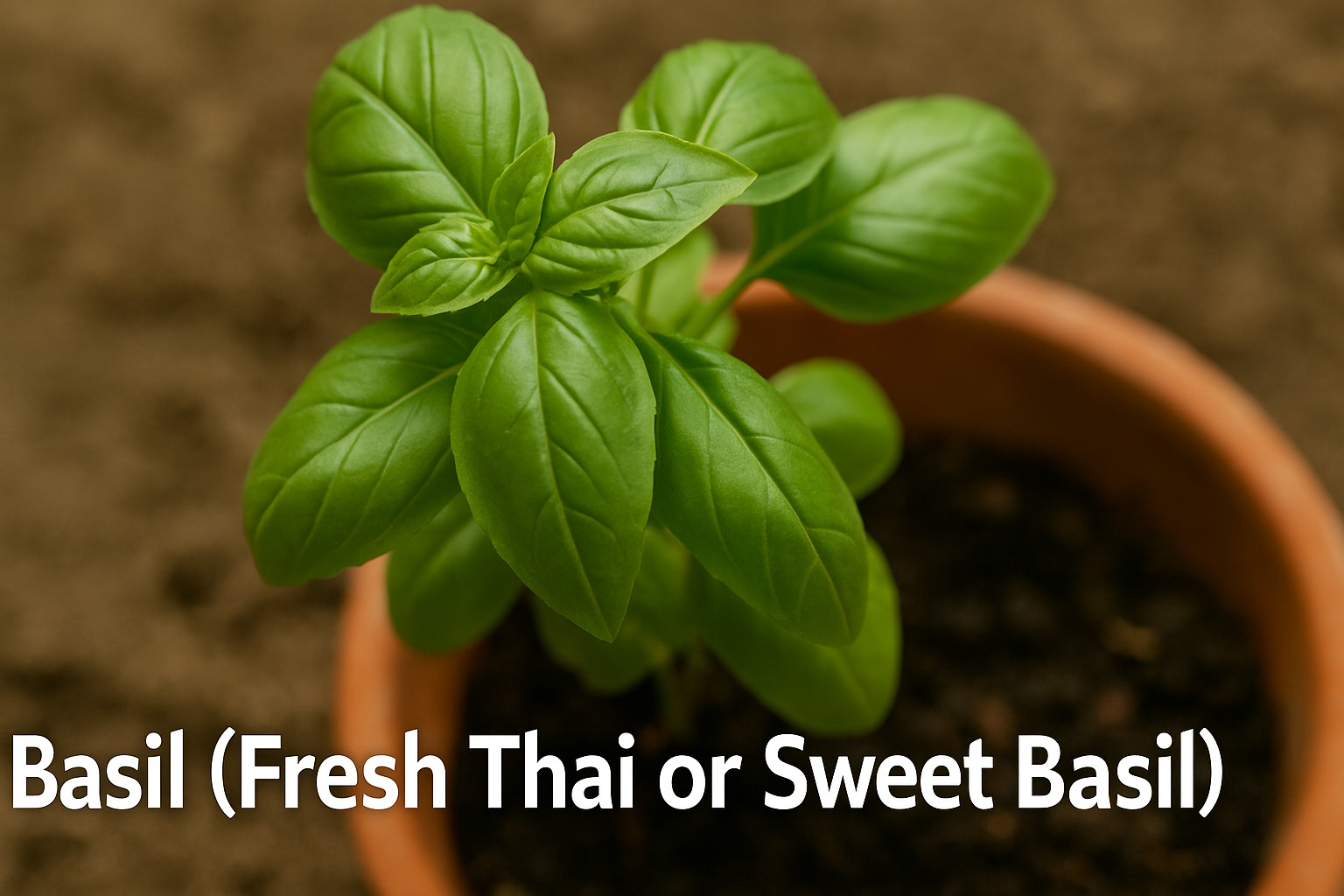.jpg)
Getting started with a kitchen herb garden is easier than you think.
Whether you have a sunny windowsill or a small balcony, growing fresh herbs at home adds flavor to your cooking and joy to your day.
In this guide we’ll show you how to grow herbs in pots, share beginner-friendly tips (especially for Indian homes), and even offer cultural insights about Tulsi (holy basil).
With the right tools and Urban Plant seed kits, you can start your own culinary herb kitchen garden and enjoy homegrown basil, coriander, mint, and more.
How to Start Your Own Culinary Herb Kitchen Garden
.jpg)
Begin by choosing a bright spot in your home – a sunny kitchen windowsill, balcony, or terrace. Herbs generally need at least 4–6 hours of sunlight per day to thrive.
Consider how to grow herbs in pots: use deep containers (about 8–12 inches) with drainage holes so roots stay healthy.
Good airflow and drainage prevent rot. For example, ceramic or terracotta pots are ideal: Urban gardeners often use colourful ceramic planters or even repurposed cups and wooden boxes to brighten the space
1- Containers and layout
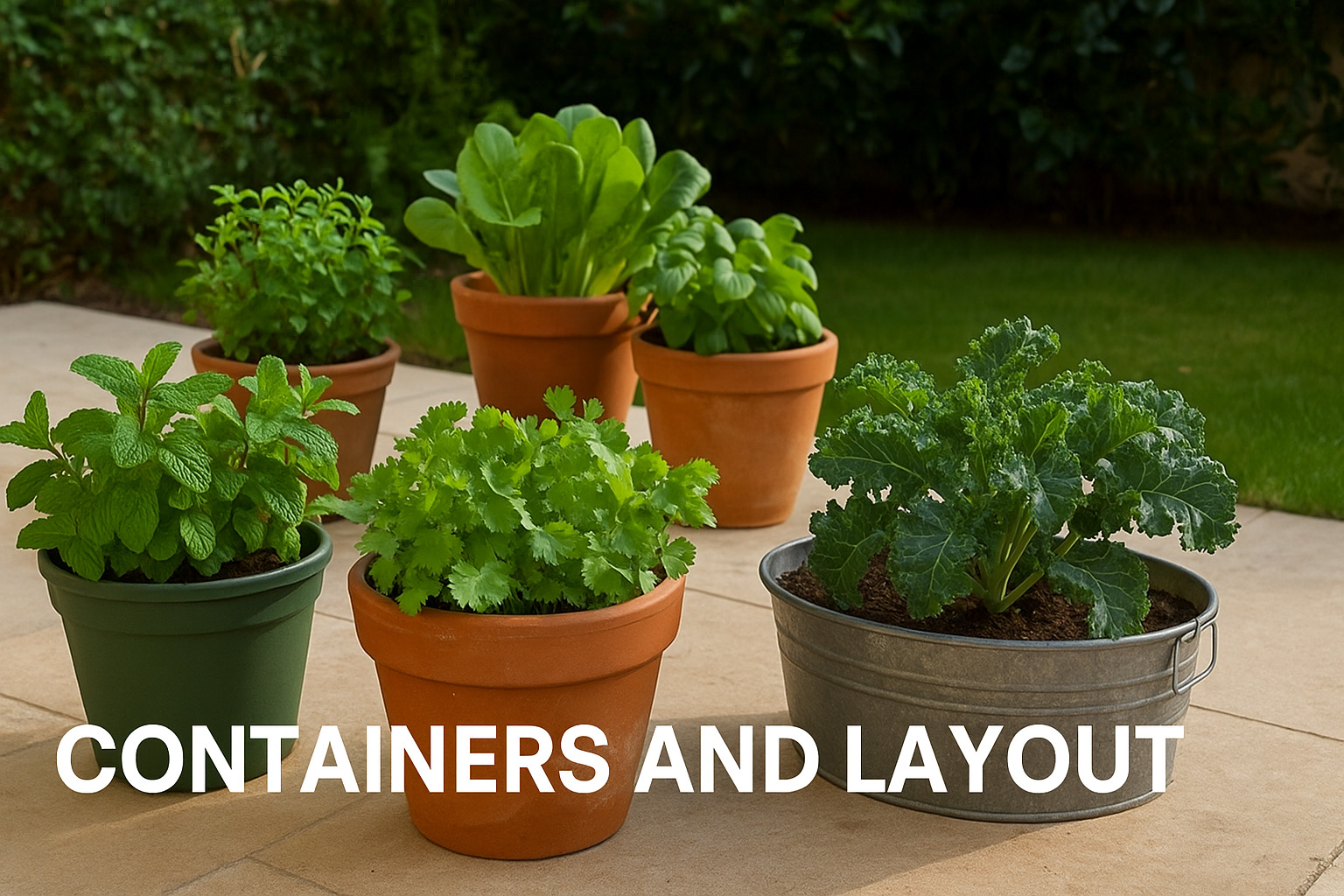
Use individual pots or a multi-level stand to save space.
Group herbs with similar needs together (sun-loving ones like basil and coriander, shade-tolerant ones like mint).
An herb placement chart can help: put taller plants (like lemon grass or lemongrass) at the back and shorter ones (like thyme or cilantro) in front of your arrangement.
2- Soil & drainage
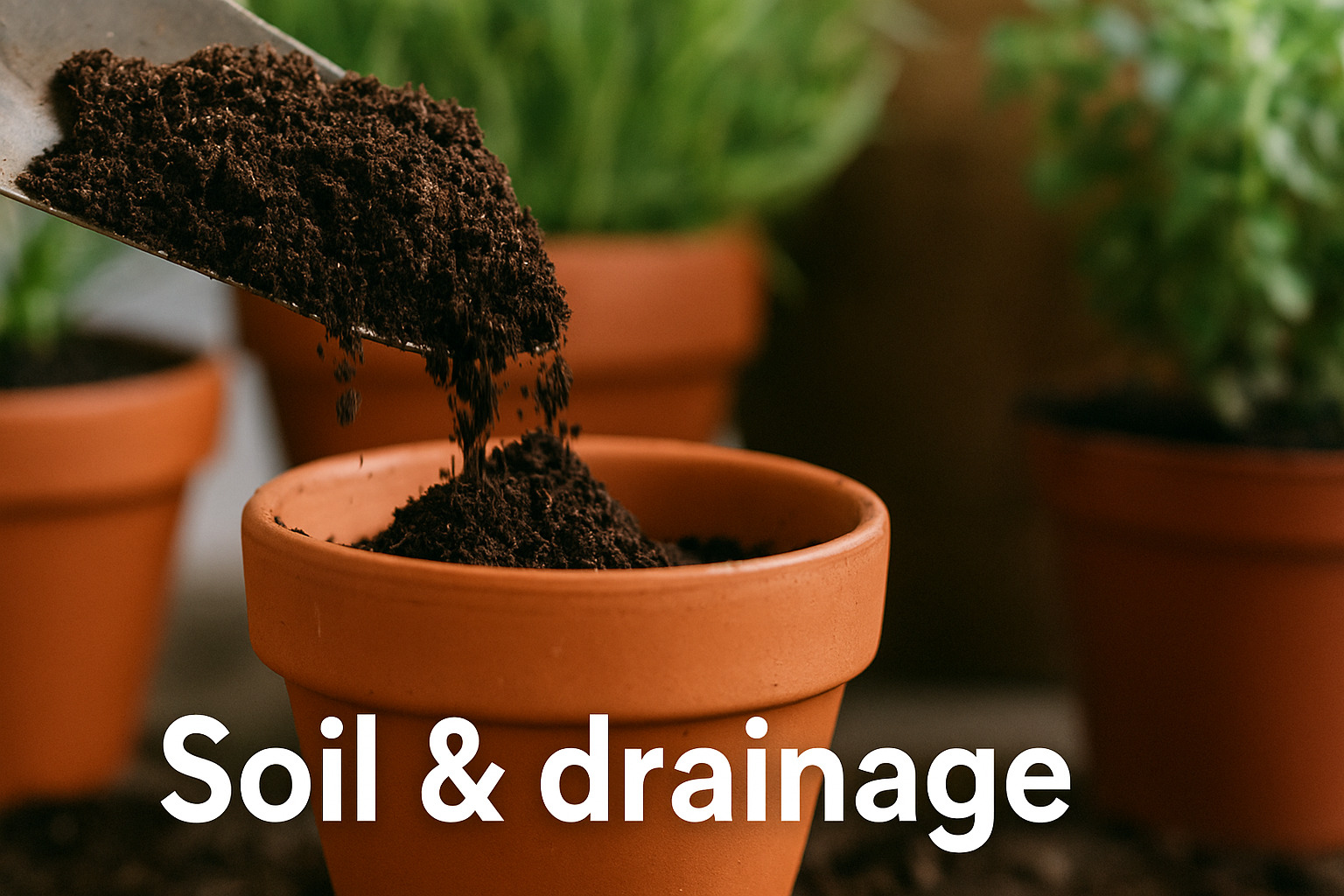
Fill pots with a well-draining potting mix or garden soil enriched with organic compost.
Herbs prefer light, fertile soil (pH around 6–7). Before planting, moisten the mix. Always use pots with holes or a self-watering planter to avoid waterlogged roots.
3- Water & feeding
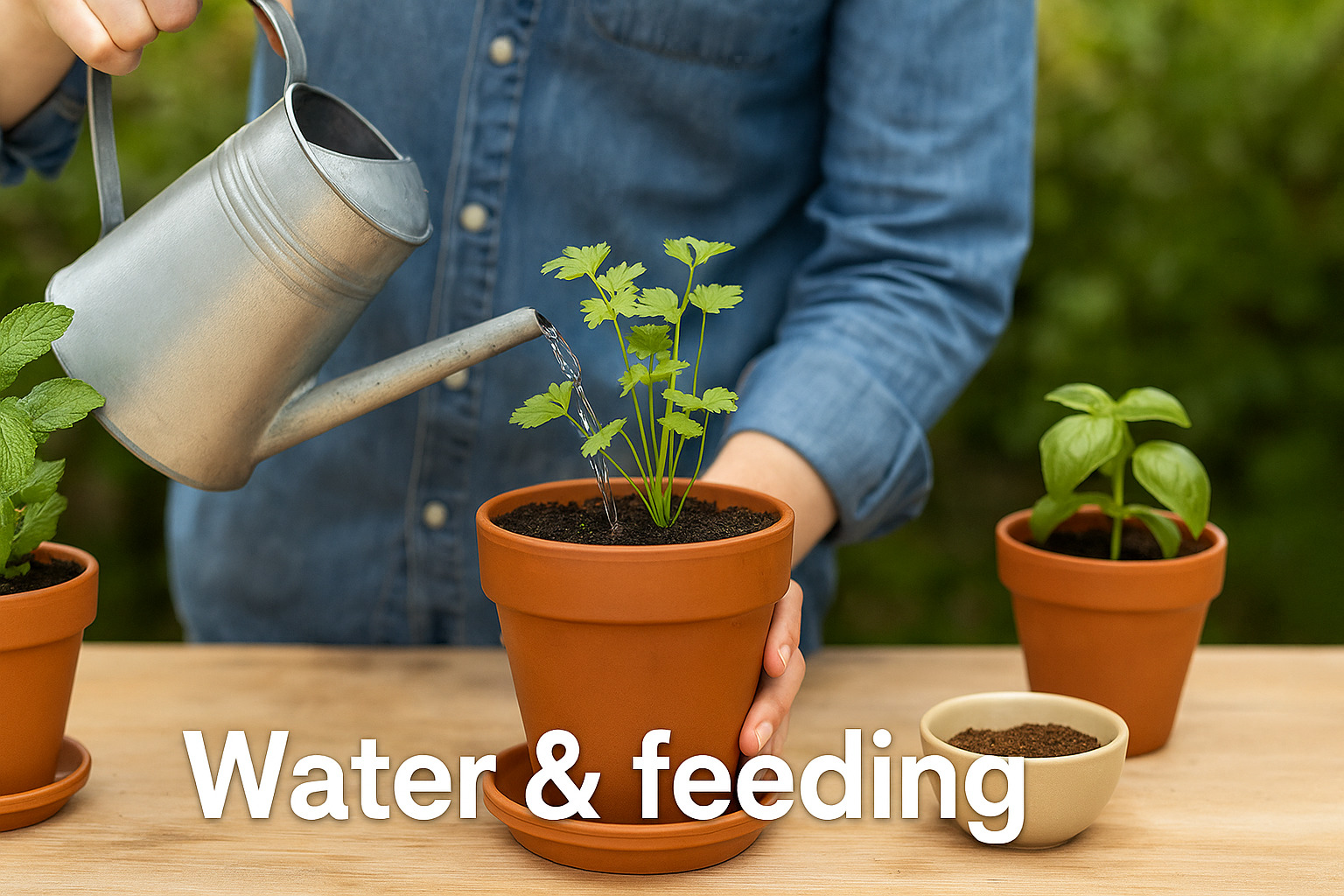
Water regularly to keep the soil lightly moist. Most herbs (mint, basil, coriander) enjoy consistent moisture but will not thrive if left in standing water.
For easy care, water when the topsoil feels dry. You can use a gentle liquid fertilizer monthly to boost growth, especially if growing herbs indoors.
With your containers and soil ready, sow the seeds or plant seedlings. For seed planting, follow the packet instructions.
For example, coriander (dhaniya) seeds should be sown about ¼–½ inch deep, 6–8 inches apart.
Cover seeds lightly and keep soil moist. Basil seeds also go ¼ inch deep and sprout in a week or two
Gently pat the soil and ensure good seed-to-soil contact.
For mint, you can use stem cuttings: simply root a 3–4 inch mint cutting in water for a week, then plant it in your pot.
Read More Gardening Inspiration
How to Grow and Care for Rubber Plants at Home – The Ultimate Indoor Guide
The Hidden Reasons: How to Fix Common Indoor Plant Problems
How to Grow Herbs in Pots
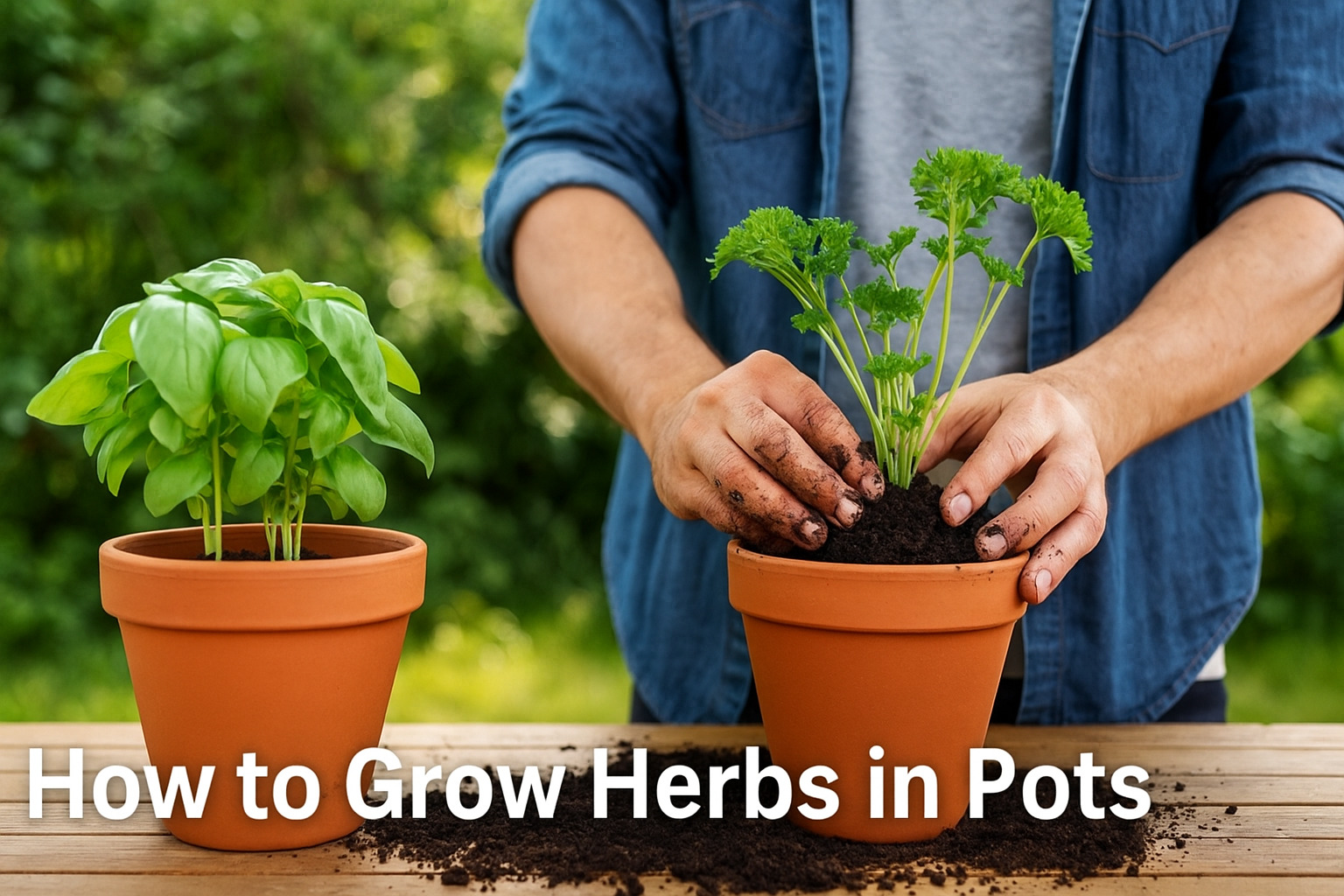
Growing herbs in pots is ideal for beginners because it’s portable and manageable. Follow these steps:
- Choose the right pot: Pick a pot at least 6–8 inches wide and deep per plant. Ensure it has drainage holes. (If needed, drill holes or use a self-watering planter to keep roots healthy.)
- Use quality potting mix: Fill pots with a balanced, organic-rich mix. Herbs like mint and basil appreciate loose, well-draining soil. You can add perlite or sand to improve drainage.
- Position for light: Place your pots in a sunny spot. A south-facing window or balcony is perfect for Mediterranean herbs like basil and rosemary. In India, even east-facing windows that get morning sun work well. Mint and coriander will do fine in partial sun too, but aim for at least 4–6 hours of light
- Water wisely: Water the pot until it drains out the holes, then let the soil dry slightly before watering again. Most potted herbs don’t like to sit in water. Mint is forgiving of a bit more water, but basil and coriander need evenly moist (not soggy) soil.
- Fertilize occasionally: Every 4–6 weeks, feed with a mild organic fertilizer or compost tea to replenish nutrients. Herbs in pots have limited soil and benefit from this regular boost.
By following these container gardening steps, you’ll soon have a thriving kitchen herb garden.
And if you need supplies, Urban Plant offers herb seed kits and container sets – for instance, check out the Herb Garden Combo or grab a complete 7-Piece Tools Kit for beginners.
A sturdy fork or trowel from Urban Plant helps with planting and potting (the Essential Gardening Tools Kit is perfect for home gardeners).
Essential Herbs to Grow
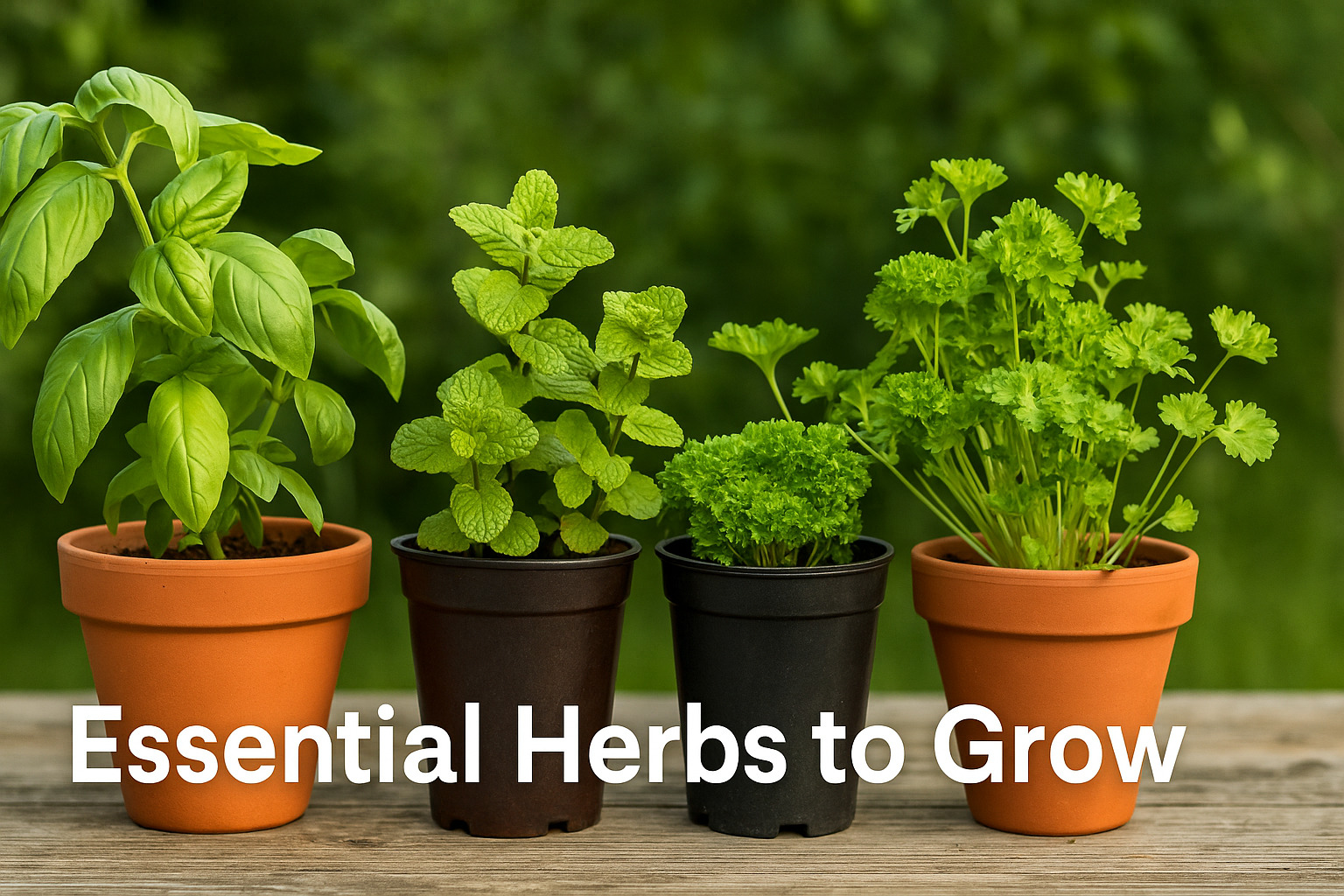
Indian kitchens love fresh herbs for flavor and health. Here are some easy ones to grow with tips for each:
1- Tulsi (Holy Basil)
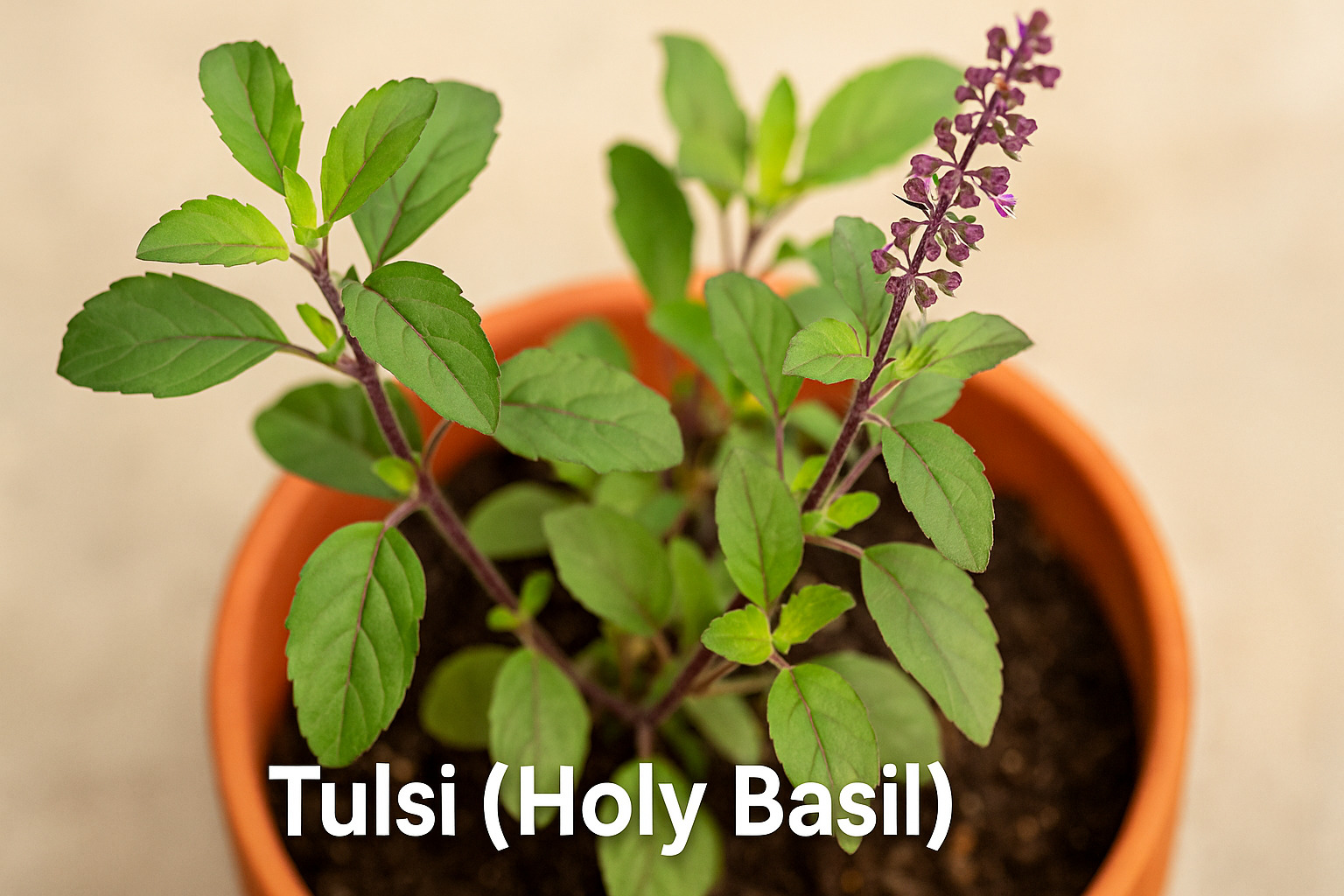
Tulsi is revered in India as a sacred plant – many Hindus grow it in a Tulsi Vrindavan at home for spiritual and medicinal reasons.
It’s also a very hardy herb. Tulsi (Ocimum sanctum) thrives in warm sunlight and needs regular watering.
Plant tulsi in a sunny spot; it can even be kept on a sunny balcony or rooftop.
Use well-draining soil with compost. Tulsi can be propagated by seeds or by cuttings from an existing plant.
Pinch or prune the flowering tips regularly to encourage a bushy plant. Culturally, having a tulsi plant at home is believed to purify the air and bring positive energy
Tulsi (Holy Basil) leaves – a sacred herb in India. Apart from its spiritual value, Tulsi is an easy-to-grow kitchen herb. It prefers sun and regular watering, and can be propagated from seed or stem cuttings
2- Coriander (Dhaniya/Cilantro)

Coriander is a beloved herb in Indian cooking – it’s used in chutneys, curries, and garnishes. To grow coriander at home, sow coriander seeds directly in pots of moist soil.
They need sun or partial sun (at least 4–6 hours per day) and a cool climate (20–25°C is ideal).
Keep the soil evenly moist. Begin harvesting the leaves (“cilantro”) when plants reach 6–8 inches tall (about 4–6 weeks after sowing).
Pinch leaves from the outside to allow the center to keep growing.
If your coriander starts to flower (bolt) quickly in hot weather, grow a fresh batch every few weeks or move the pot to a slightly cooler, partially shaded spot.
3- Mint (Pudina)
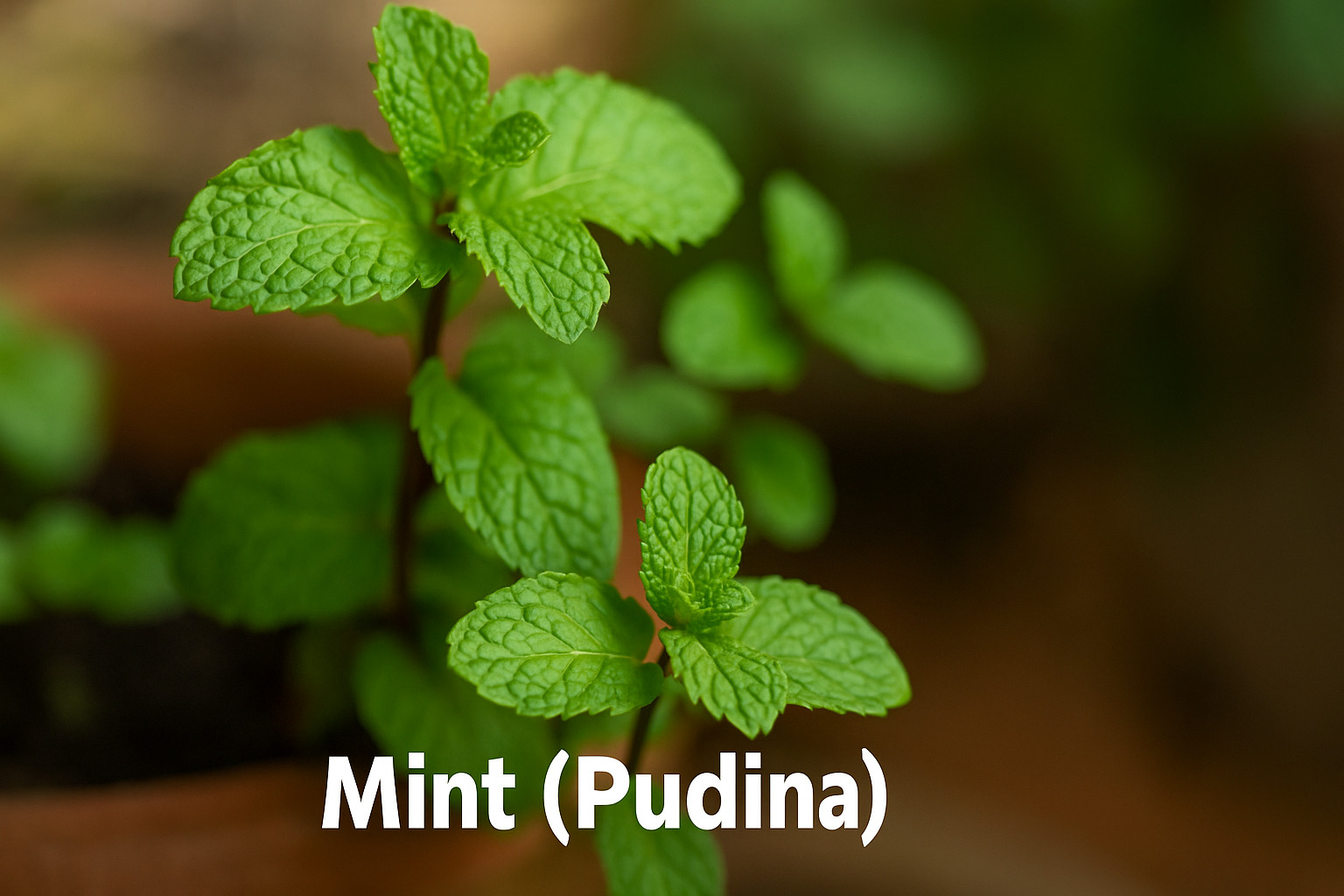
Mint is extremely easy to grow – it often thrives in pots with minimal care.
It’s a vigorous plant and can quickly overtake a garden, so container growing is perfect.
Use a pot at least 6–8 inches deep with rich soil. Mint prefers bright light; indoors place it near a window or under a grow light for the best aroma.
It tolerates partial shade better than other herbs, but more light keeps it bushy. Water mint regularly; it likes moist soil (even tolerating “wet feet”).
but let the top soil dry slightly between waterings. You can easily propagate mint by stem cuttings: trim a 3-inch sprig, remove lower leaves, and root it in water or potting mix.
Mint plant in a decorative pot. Mint grows fast – give it ample room and light. A sunny spot is best; indoors, a bright windowsill or grow light will keep mint vibrant.
4- Basil (Fresh Thai or Sweet Basil)
Basil (Sabut/Dhania patta seasoning) is another kitchen favorite. For indoor basil, use a pot with good drainage and place it in a south-facing or well-lit window.
Basil loves about six hours of sunlight or more. Water basil when the topsoil is dry – roughly every 1–2 days in hot weather, or less in cooler seasons.
Don’t let the soil stay soggy. Pinch off any flower buds as soon as they appear, because flowering can make the leaves bitter.
Vibrant basil leaves ready for harvesting. Basil prefers ~6 hours of sun, well-draining soil, and regular watering when soil is dry.
Other Tips and Indian Home Practices
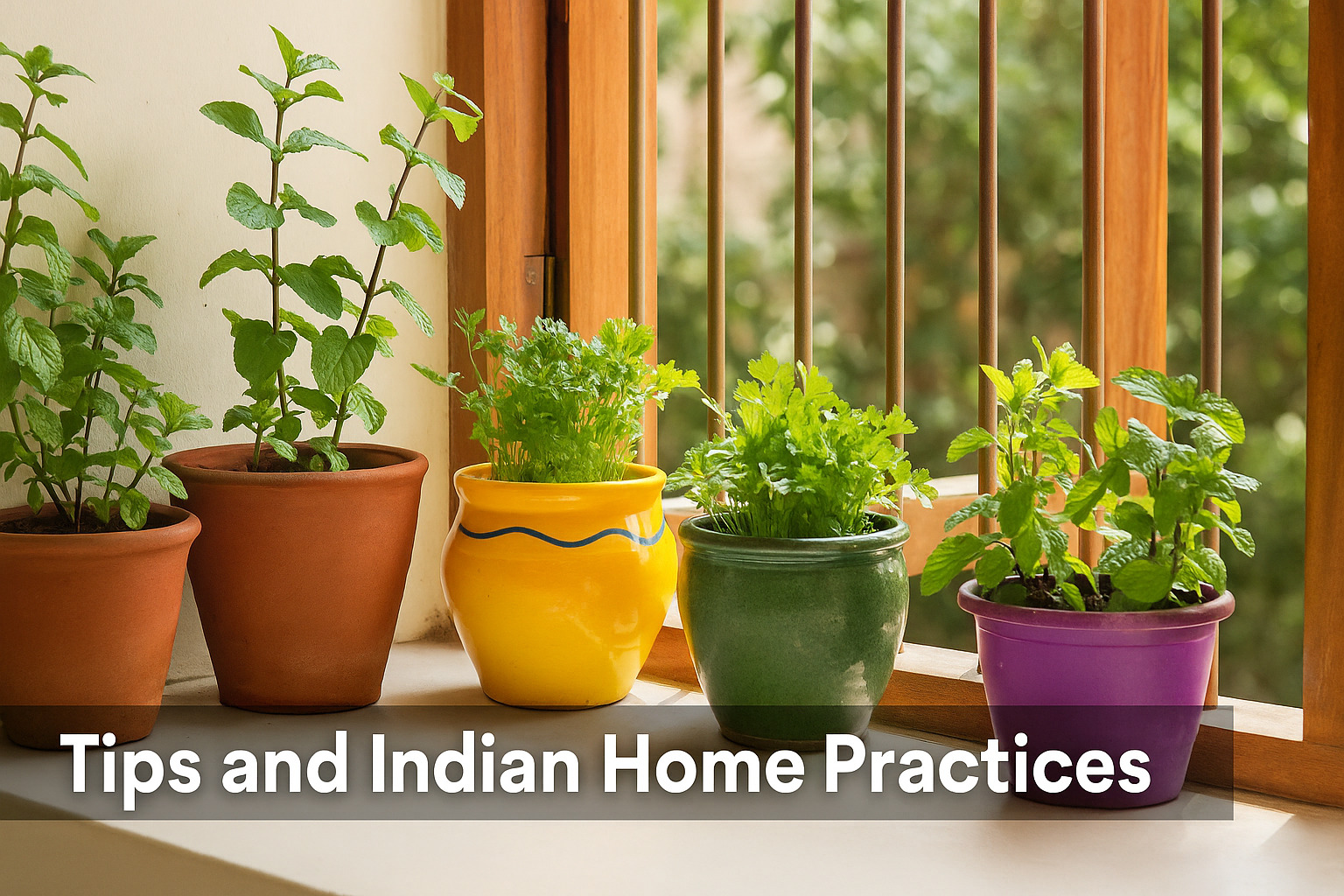
- Companion planting: In a pot, you can mix compatible herbs (e.g., basil with cilantro) so the flavors enhance each other. Just be mindful of sunlight: taller basil can shade lower parsley or cilantro, for instance.
- Recycling at home: Indian gardeners often repurpose items. As Monika Poddar suggests, you “can grow them in cups, teapots, old pots and pans… and jump on the recycling bandwagon”. This means you don’t need fancy gear – use what you have, as long as plants get sunlight and water.
- Pest control: Indoors or on a balcony, pests are fewer, but keep an eye out. Mint and tulsi can attract ants or aphids. Use natural remedies like neem oil spray or soapy water. Ensuring good airflow around pots also prevents fungal issues.
- Climate care: In hot Indian summers, consider partial shade for delicate herbs (afternoon sun can scorch young leaves). In winter, some herbs like basil will slow down; move them to a warmer indoor spot if needed.
Expert Tips and Real-Home Examples
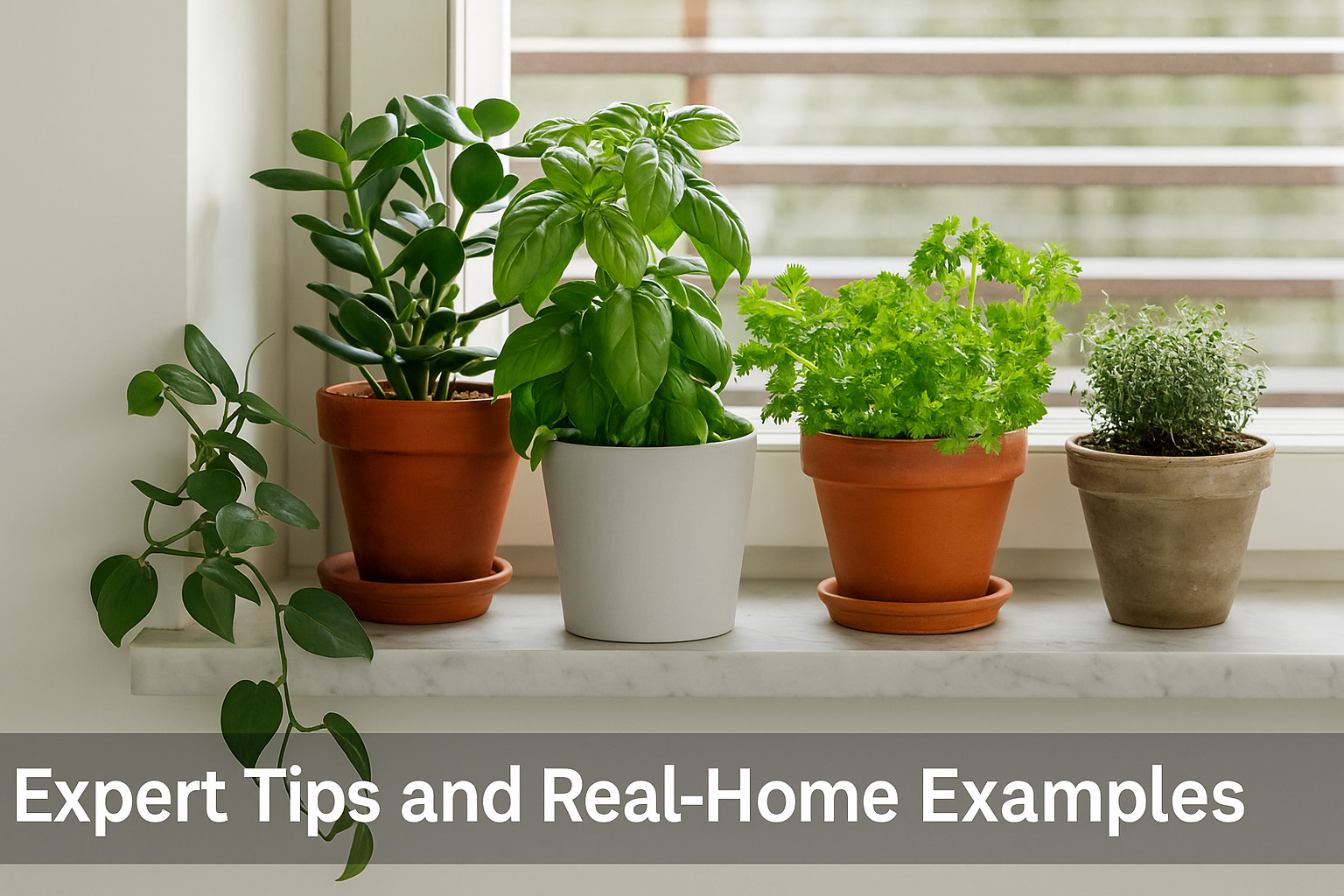
Urban gardeners say: “Grow herbs near your kitchen for convenience,” advises one city gardener.
“A small kitchen herb garden can fit even on a windowsill or balcony. Use vertical planters or stands to save space.
” Indeed, space-saving stands like Urban Plant’s Vistara Planter Stand can hold multiple pots in a compact area (see Urban Plant’s plants stand collection for ideas).
From Indian homes: Many families plant tulsi on their terrace or in courtyard. Ayurveda followers treat tulsi as a kitchen herb too – pluck its leaves for herbal tea or curries.
A mother in Mumbai shares, “My kids love picking coriander leaves themselves; it makes them eat better.” These user-generated tips show the joy of gardening: small kids can help water or harvest, turning it into a family activity.
FAQs about Growing Kitchen Herbs
1. How do I start a kitchen herb garden at home?
Use small pots with drainage, good soil, and place them in a sunny kitchen window or balcony. Start with easy herbs like coriander, mint, or tulsi.
2. Which herbs grow best in pots for beginners?
Coriander, mint, tulsi, and basil are beginner-friendly herbs that grow well in pots with minimal care.
3. How much sunlight do herbs need indoors?
Most herbs need 4–6 hours of sunlight daily. Place them near a sunny window or use a grow light if needed.
4. How do I grow coriander at home?
Sow crushed coriander seeds ½ inch deep in moist soil. Keep in partial sun and water regularly. Harvest leaves in 3–4 weeks.
5. Can I grow mint indoors in low light?
Yes, mint tolerates partial shade and can grow indoors. Just keep the soil moist and place it near a bright spot.
6. Why is tulsi important in Indian homes?
Tulsi is sacred in Indian culture, known for purifying air, promoting wellness, and offering spiritual benefits.
7. How often should I water herbs in pots?
Water when the top 1 inch of soil feels dry. Avoid overwatering to prevent root rot.
8. Where can I buy herb garden kits online?
You can buy herb kits, seeds, and tools from Urban Plant—ideal for balcony and kitchen gardening.
Bring Your Herb Garden Home
Growing a kitchen herb garden is rewarding: you get fresh flavours and a touch of green in your home.
By following these steps – choosing the right pots and soil, placing herbs in sun, and caring for key plants like tulsi, coriander, mint, and basil – you’ll soon harvest your own herbs.
Remember the cultural heritage of plants like tulsi and the tips from fellow gardeners, and you’ll truly bring herbal magic home.
Ready to get started?
Explore Urban Plant’s range of herb seed kits, planters, and gardening tools to make your herb garden thrive.
Happy planting!

